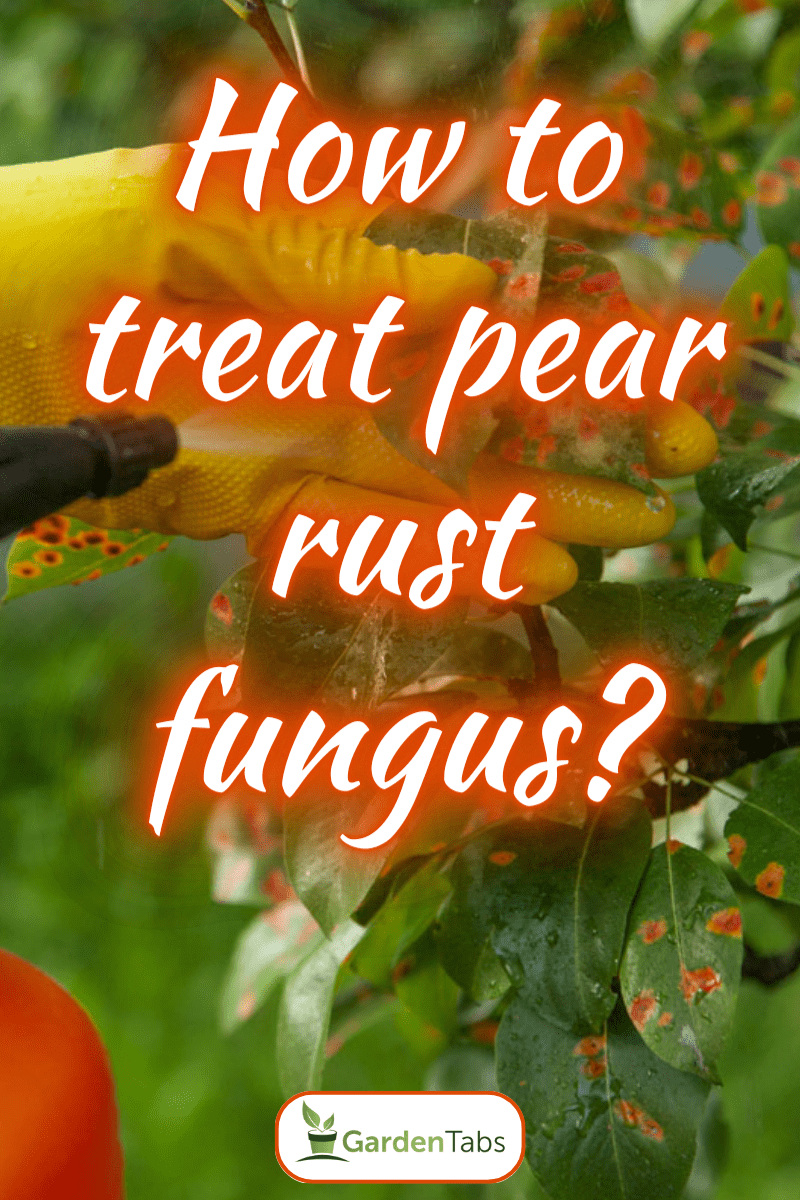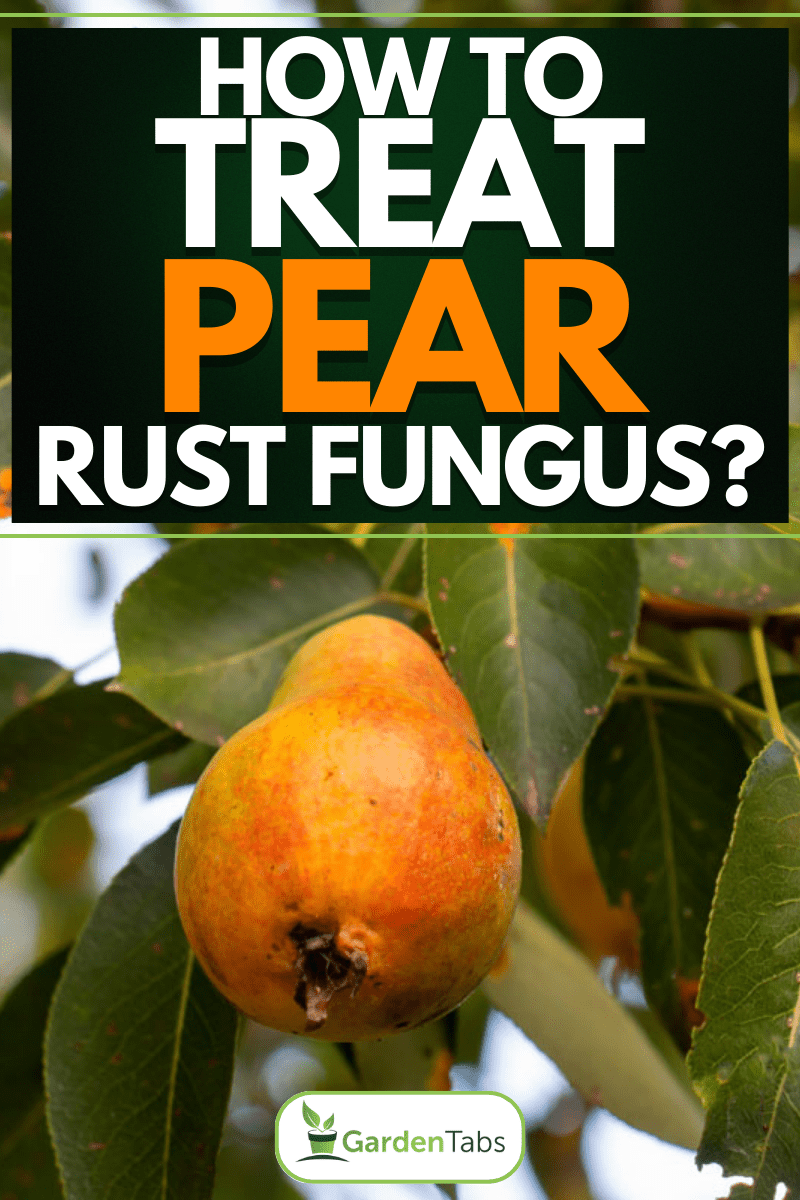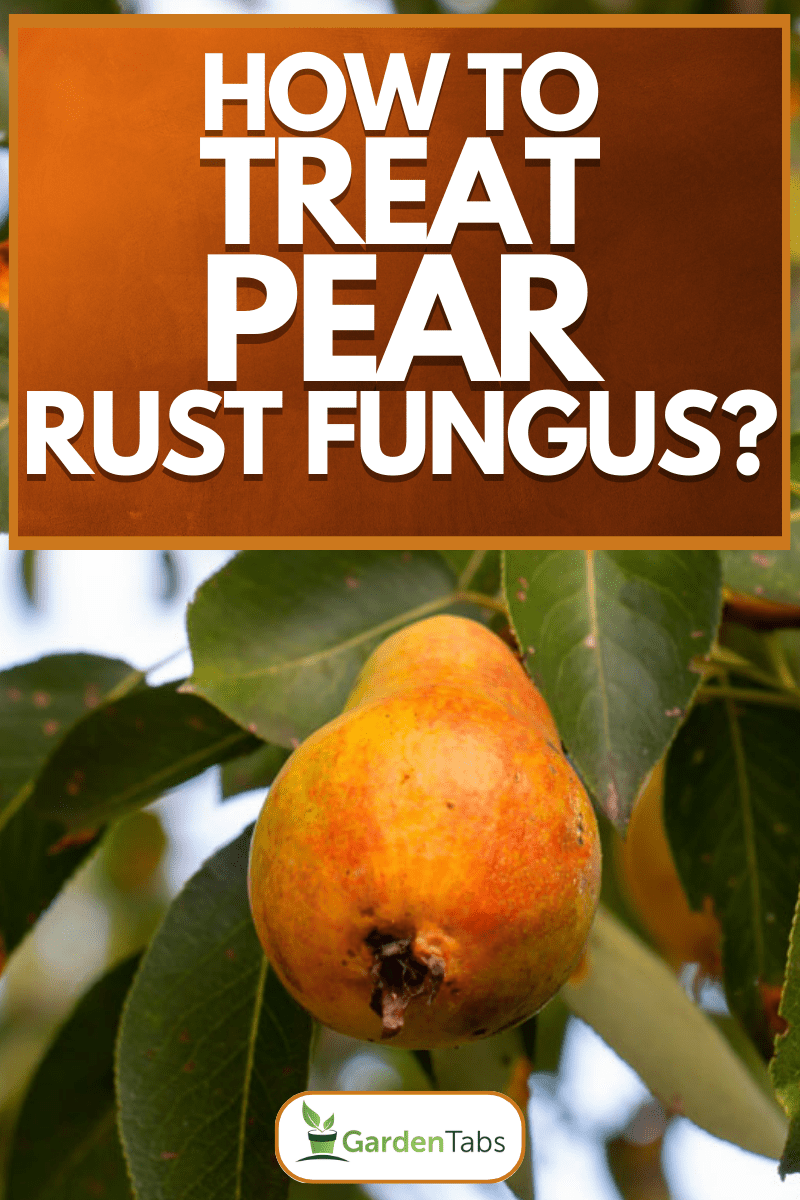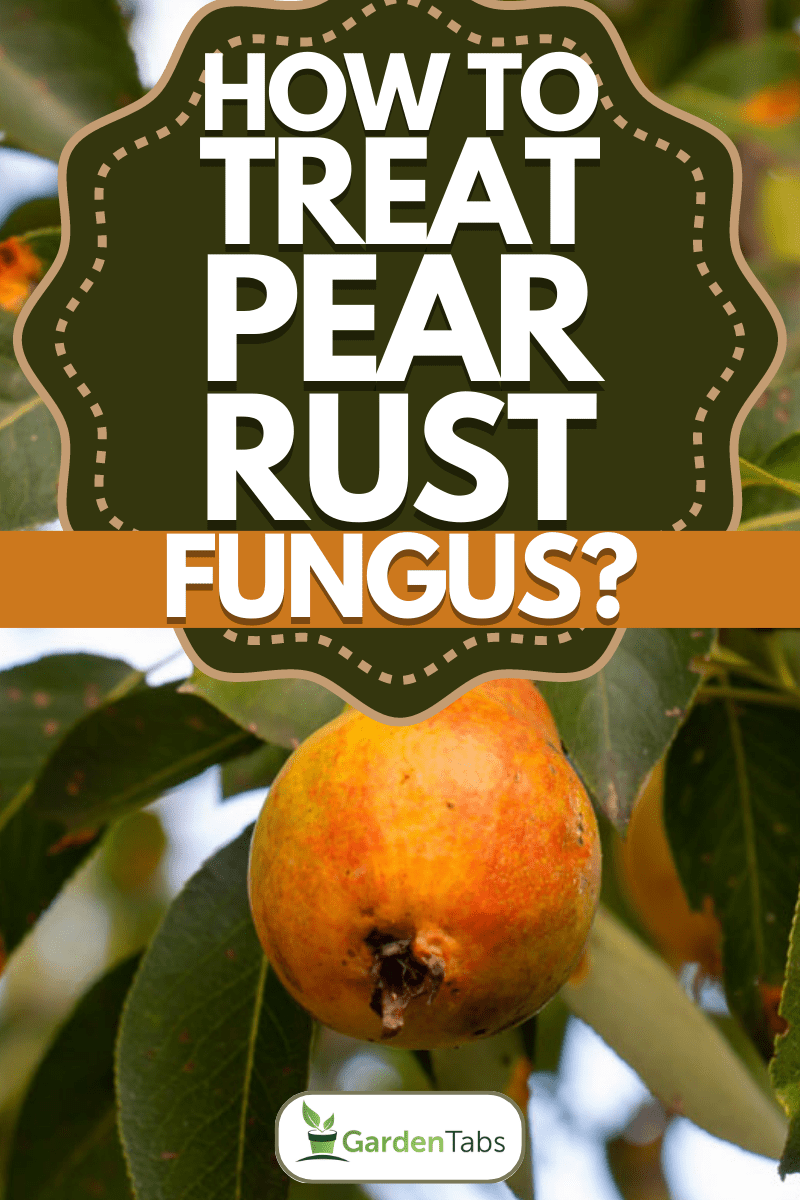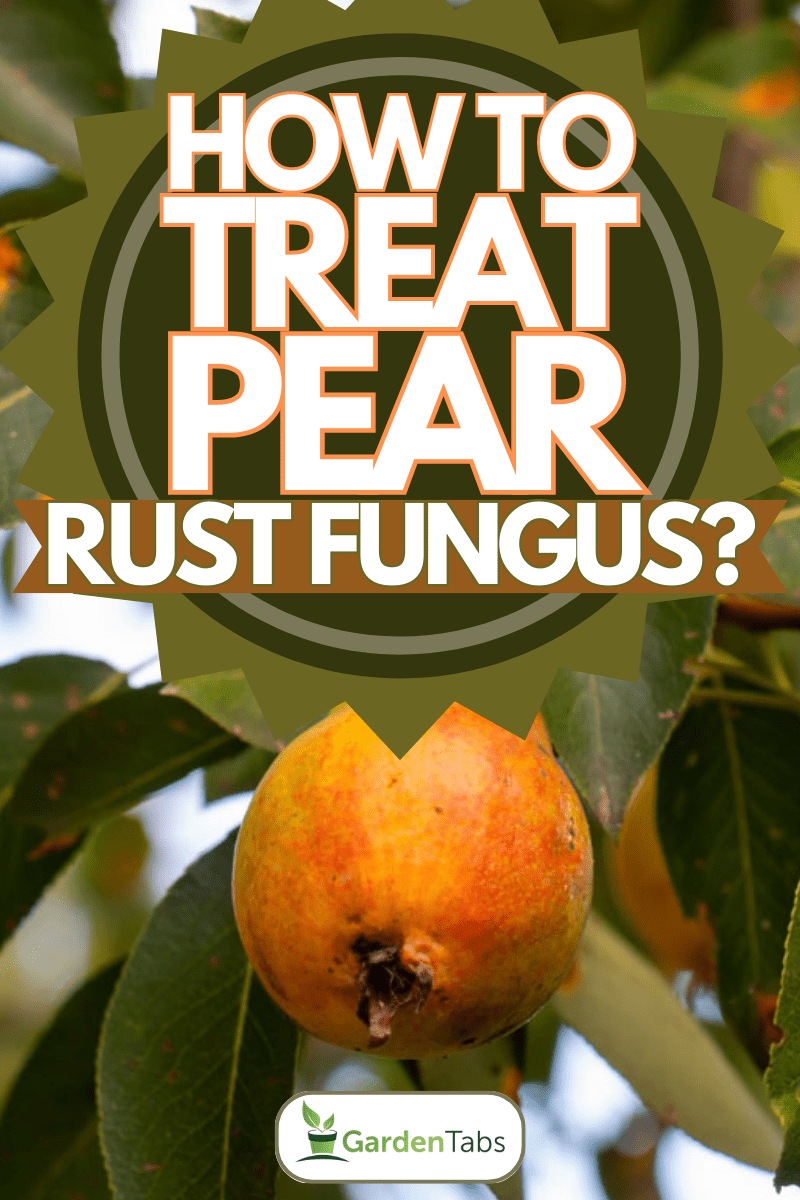If you have pear trees in your garden, you may encounter pear rust fungus at some point. Pear rust fungus can cause severe damage to your trees if left untreated. Luckily, you can treat pear rust fungus and protect your trees. We've researched the methods and will share them with you in this post.
Here are some methods for treating pear rust fungus:
- Identify the symptoms of pear rust fungus
- Dispose of infected leaves
- Prune infected branches
- Apply fungicides
Continue reading as we explore effective treatments and preventive measures for keeping your pear trees healthy, flourishing, and free from pear rust fungus. Let's get started!
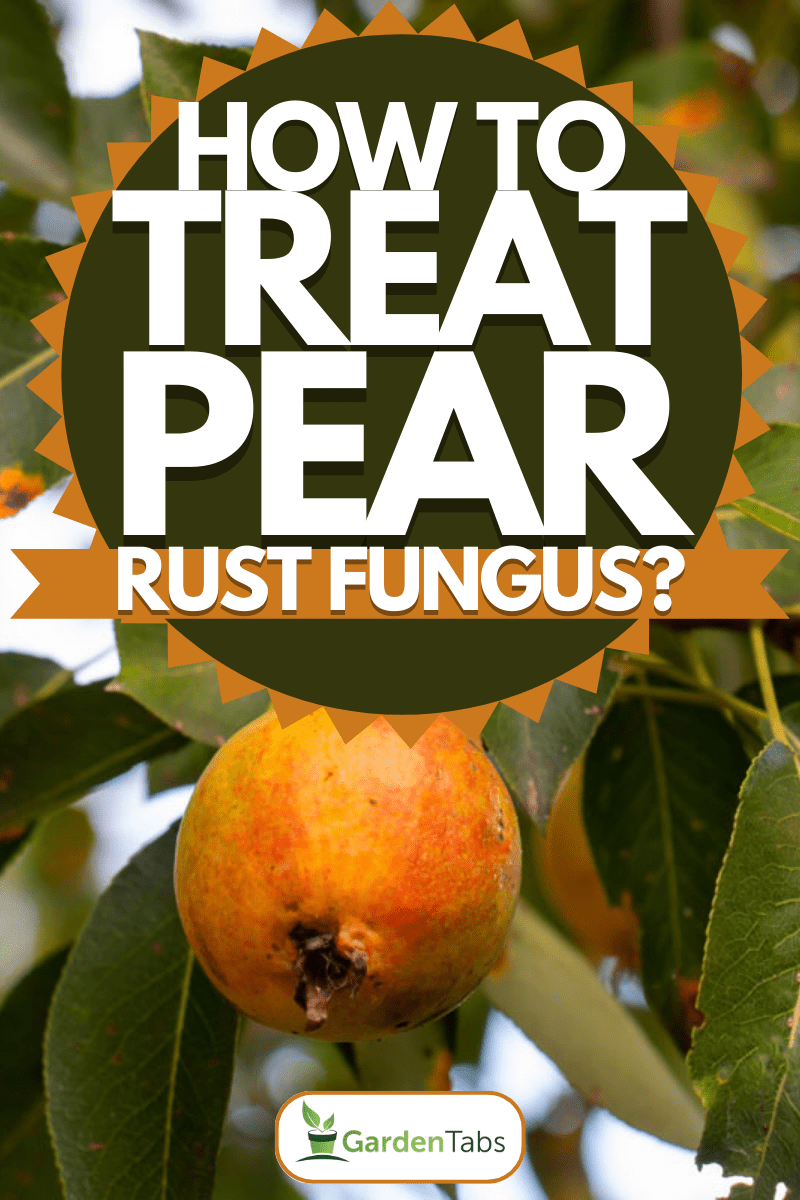
Best Methods For Treating Pear Rust Fungus
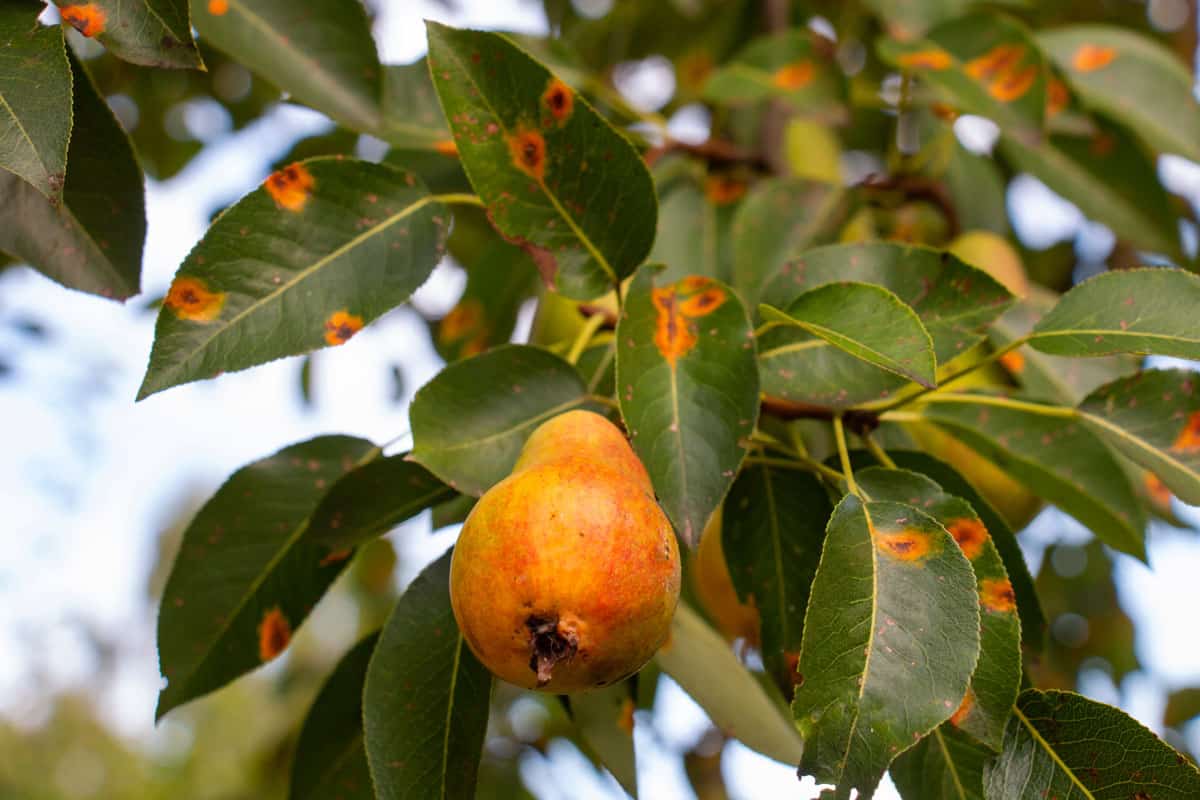
Pear rust fungus can impact pear trees as well as other fruit trees, like apple and crabapple. If left untreated, it can lead to health and productivity issues for the tree. Here's how to treat pear rust:
Identify the Symptoms of Pear Rust Fungus
The symptoms include:
- Yellow-orange or brown spots on the leaves. The fungus can produce spores that will spread to other areas of the tree, causing more damage. Take immediate action if you see these signs.
- Twisted leaves and stems.
- Spotted needles.
- Rusty leaves that fall prematurely.
Get Rid of Infected Growth
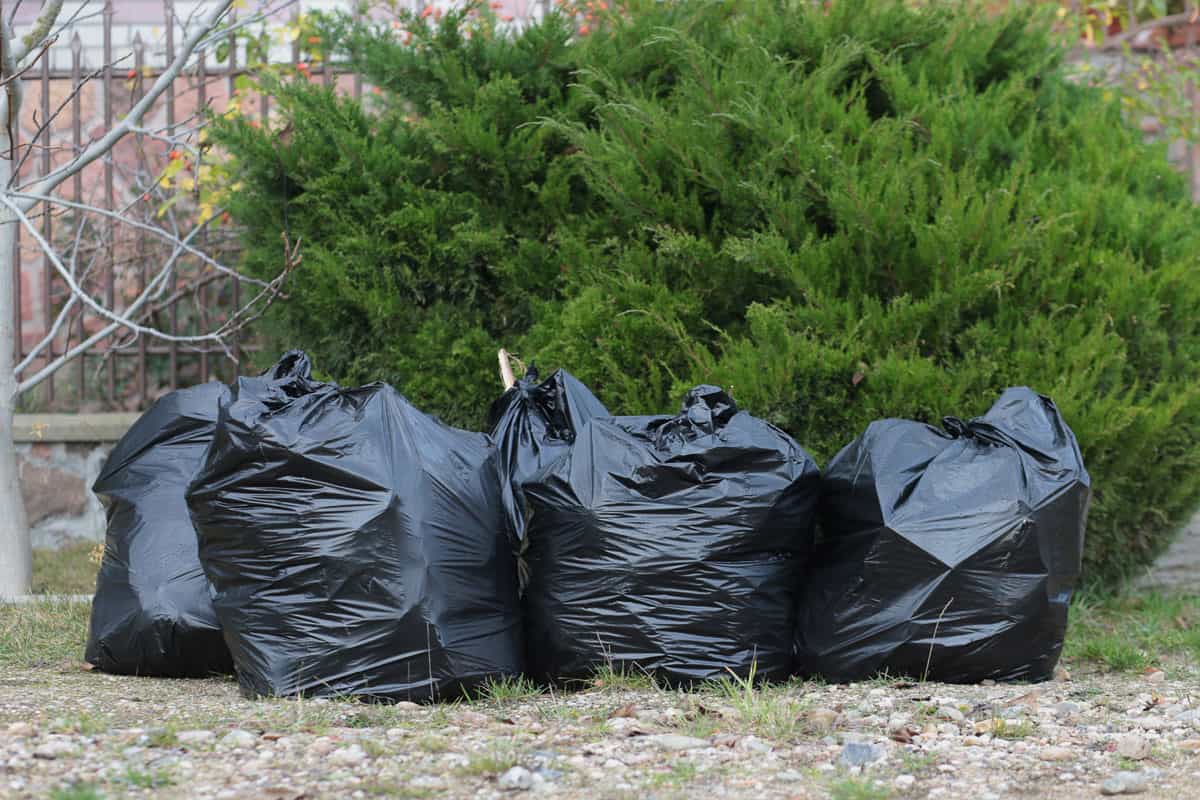
Dispose of any infected leaves or branches you have pruned from the infected tree. Do not compost them because this will only help to spread the fungus. Place the infected leaves and tree branches in a plastic bag and dispose of them in the garbage.
Prune Infected Branches
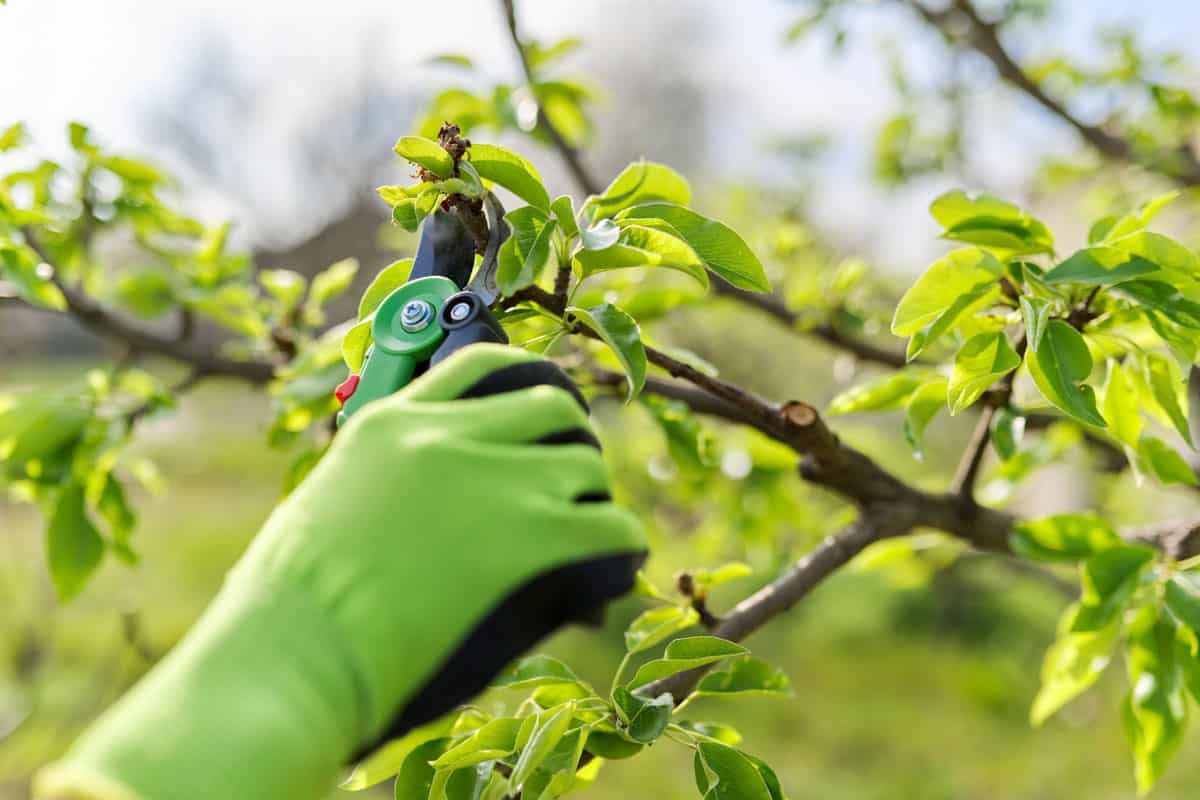
Prune the tree immediately once you have identified the infected areas to help contain the fungus spread and prevent it from spreading to other areas of the tree. Make sure to use sharp pruning shears and disinfect them with alcohol or bleach before and after each cut to avoid spreading the fungus.
Apply Fungicides
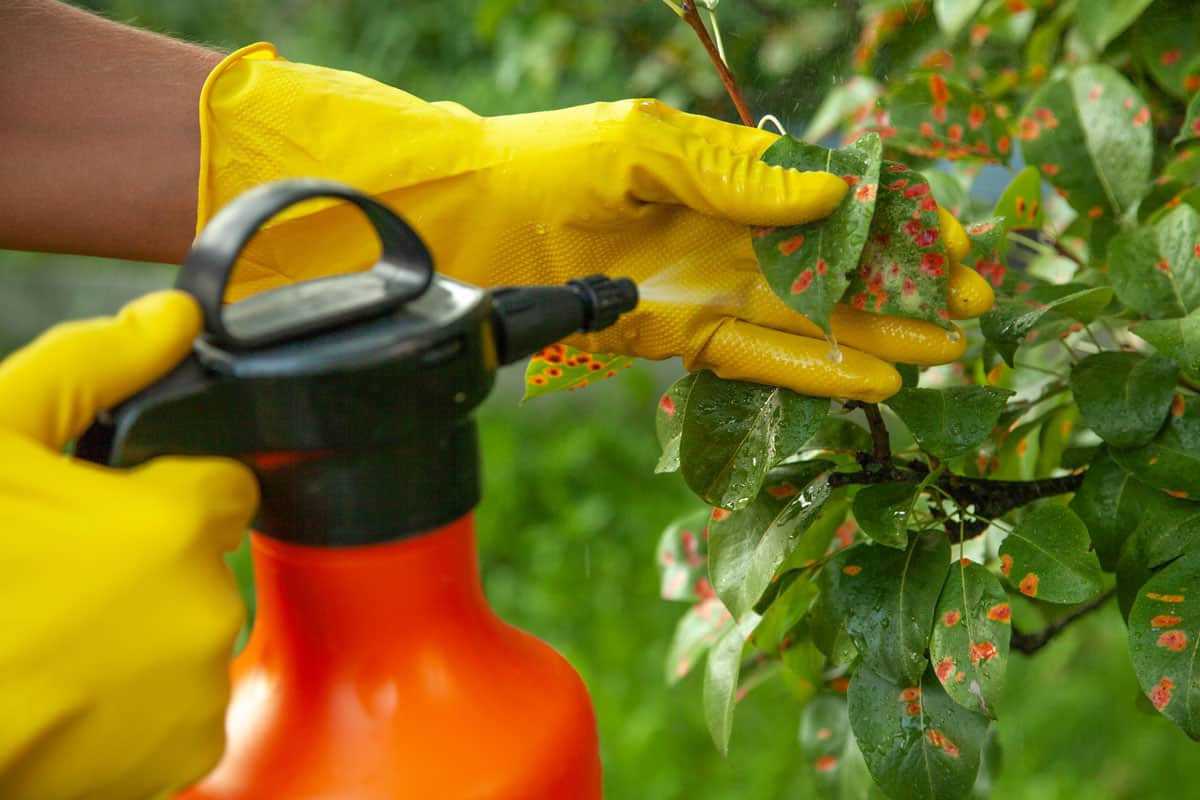
Apply a fungicide to the tree for treatment. Many fungicides are available, but you should choose one that's specifically designed to treat pear rust fungus. Look for a fungicide that has either myclobutanil, sulfur, copper, or propiconazole. These chemicals are known to be effective against pear rust fungus.
Apply the fungicide either as a spray or a systemic application. Spraying is effective for localized infections, while systemic applications are better for more widespread diseases. Follow the instructions on the label carefully when applying the fungicide.


Click here to see this fungicide on Amazon.
Copper Spray
Copper spray is an effective tool for preventing pear rust fungus. Copper spray creates a protective barrier on the leaves to prevent the spores of the fungus from growing and infecting the tree. Here's how to use copper spray to prevent pear rust fungus:
- Choose the right copper spray. Several copper sprays are available, so look for one that's labeled for use on pears and follow the instructions carefully.
- Dilute one to three teaspoons of the fungicide in one gallon of water. You should label the bottle to avoid forgetting what's inside.
- Apply the copper spray to the tree according to the instructions on the label. Be sure to thoroughly coat the leaves, and pay attention to the underside of the leaves, where fungus can thrive. Apply the copper spray in the early spring, before the leaves have fully grown, to provide maximum protection.
- Copper spray is not a one-time solution and must be reapplied throughout the growing season to maintain effectiveness. Reapply the solution every seven to 10 days.


Click here to check out this copper fungicide on Amazon.
Myclobutanil
Myclobutanil is a systemic fungicide that is effective against fungal infections. To use myclobutanil to kill pear rust fungus, follow these steps:
- Put on protective gear before using myclobutanil fungicide.
- Spray the solution on the leaves and thoroughly coat them.
- Repeat the application upon instructions on the label to prevent damage to your trees or harm to the environment. Remember, myclobutanil is a chemical fungicide, so use it with caution.


Click here to see this myclobutanil fungicide on Amazon.
Propiconazole
Propiconazole can also be used on pear rust fungus. Follow these steps to use propiconazole fungicide:
- Use a spray applicator such as a hose-end sprayer, handheld pump sprayer, backpack sprayer, or skid sprayer.
- If you only need to treat specific areas, use a handheld pump sprayer or backpack sprayer for more precise application.
- If you need to treat a larger space, use a hose-end sprayer for more efficient coverage.


Click here to check out this propiconazole fungicide on Amazon.
Sulfur
Sulfur fungicide is widely used for fungal infections, including powdery mildew, black spot, and rust. This fungicide creates an acidic environment that hinders fungal spores' growth.
A sulfur fungicide can help control and kill pear rust fungus. The sulfur fungicide application helps to prevent the spread of the fungus by inhibiting the growth of spores. Sulfur fungicide also has a toxic effect on the fungal cells, causing them to die off.
To apply sulfur fungicide, you can use a dust or liquid formulation. The dust formulation is applied as a fine powder, while the liquid formulation is mixed with water and sprayed on the plants. The application method should match the size of your garden and the severity of the infection.


Click here to see this sulfur fungicide on Amazon.
How To Prevent Pear Rust Fungus
Practice Good Tree Maintenance
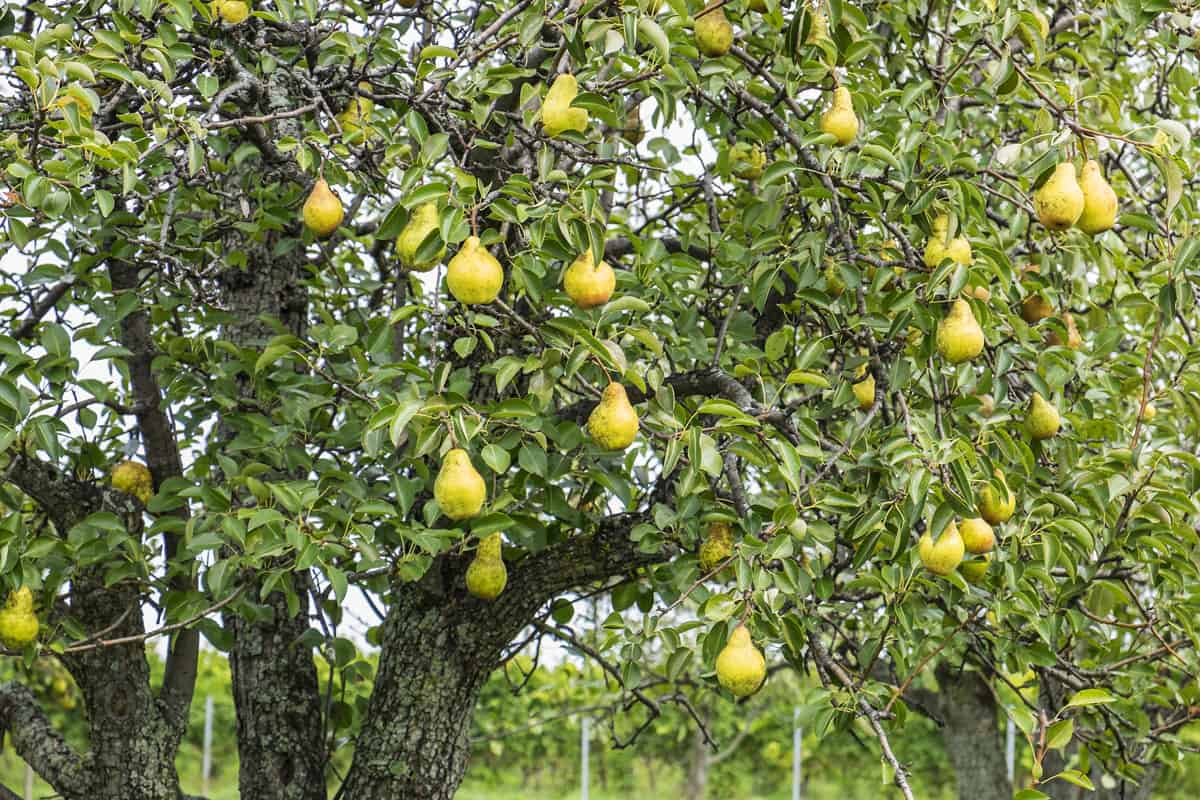
Prevention is better than cure. Practice good tree maintenance to prevent pear rust fungus from affecting your trees in the first place.
- Water your tree regularly and apply fertilizer.
- Prune the tree to remove dead or diseased branches and dispose of them properly to prevent fungal infections.
- Do not add foliage that's possibly diseased to your compost pile to avoid spreading infections to healthy plants.
Apply Neem Oil
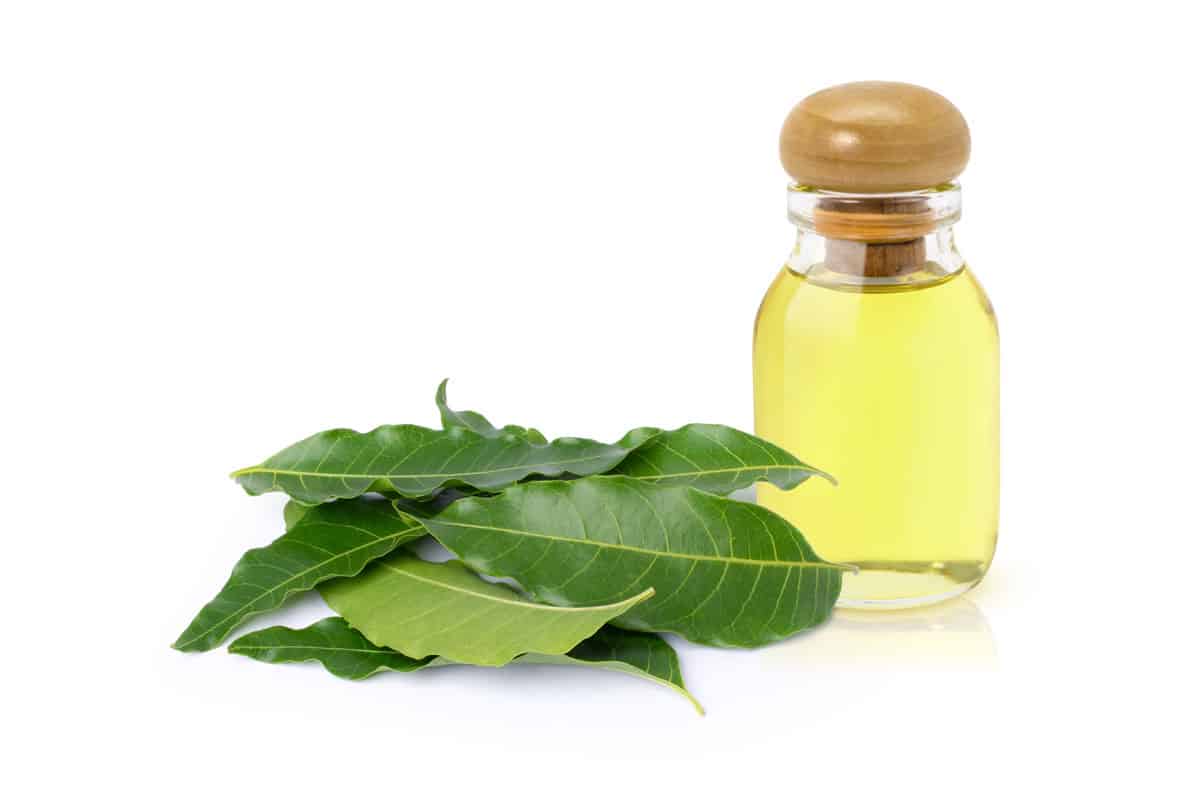
Neem oil is a natural fungicide that has been used for centuries to prevent various plant diseases, including pear rust fungus. Neem oil contains compounds that have antifungal properties and can help protect your pear trees from fungal infections.
Follow these steps to use neem oil to prevent pear rust fungus:
- Mix one teaspoon of pure neem oil and one teaspoon of dishwashing soap in one quart of clean water. You can also use a ready-to-use neem oil spray and apply it directly to the infected leaves.


Click here to check out this neem oil on Amazon.
- Test the neem oil on one part of an infested leaf and wait up to 24 hours to see if the leaf has damage. If the leaf looks okay, you can proceed with the treatment.
- Spray the neem oil solution on the leaves of your pear trees. Be sure to thoroughly coat the leaves and spray the undersides where the fungus can flourish.
- Reapply the neem oil solution every 14 days throughout the growing season to maintain its effectiveness.
Although neem oil is effective against pear rust fungus, you should note that it is not a cure for a tree that is already infected. As we mentioned in this post, if your pear tree already has a severe rust fungus infestation, you should use other methods, such as pruning infected branches and applying fungicides.
Summing Up
Pear rust fungus can cause severe damage to pear trees, leading to diminished fruit production or even death if left untreated. In this post, we covered several ways to treat pear rust fungus and protect your trees. We also discussed ways to prevent possible fungal attacks.
We hope this article has helped you with your problems with rust fungus. You can check out our other posts for more helpful tips on gardening.
How To Get Rid Of; Prevent Lawn Rust On Your Home Landscaping?
Pro-Level Gardening Tip: Use Cinnamon As A Natural Fungicide

